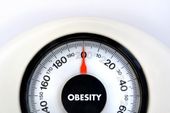The villagers' condition is called Laron syndrome, which is caused by an insensitivity to growth hormone.
Laron syndrome results from a mutation in the gene that codes for growth hormone receptor (GHR), a protein that binds with the human growth hormone and ultimately results in the production of the insulin-like growth factor 1 (IGF1), causing cells to grow and divide. When a person has two of these mutated and non-working genes, they can develop the disease. [LiveScience]Jaime Guevara-Aguirre, the leader of the study about the Ecuadorians appearing in Science Translational Medicine, has been looking into their condition and extraordinary resistance to age-related diseases for more than two decades, since his serendipitous discovery of the people while riding horseback in Ecuador.
"I discovered the population in 1987," Dr. Guevara-Aguirre said in an interview from Ecuador. "In 1994, I noticed these patients were not having cancer, compared with their relatives. People told me they are too few people to make any assumption. People said, 'You have to wait 10 years,' so I waited. No one believed me until I got to Valter Longo in 2005." [The New York Times]










